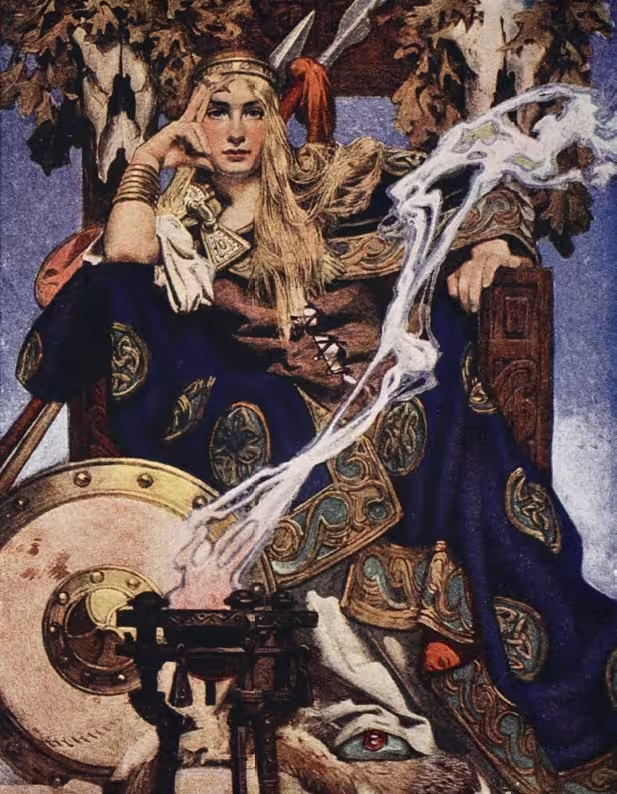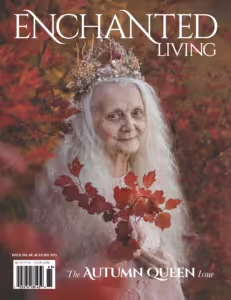Medb, the queen of Ireland’s western province of Connacht, and her husband,
Ailill, are in bed, having a bit of pillow talk. Perhaps a long day has ended, and the stars are the only light in their Iron Age chambers. Perhaps she and her consort have been consorting, and the mood is convivial at first. Long married, they have a history of shared joys and unresolved grudges.
The conversation takes a turn early on when the king muses about how much better off Medb became on the day she married such a wealthy man as himself. “I was well enough without you,” she replies. And the temperature in the bedroom begins to rise. Back
and forth they go, tallying up the goods each brought to the marriage, counting their coins and jewels, their wardrobes, the men who work for each, and all the land and livestock, every pig and sheep.
They finally inventory their cattle. The best of the herd is a prized white-horned bull, Finnbennach, who was born of one of Medb’s cows but refused to be led by a woman and wandered over into Ailill’s pasture.
The queen sends for her herald and asks if there’s a better bull to be had in all of Ireland. “I know where to find such a bull and better,” he says. “In the province of Ulster, in the territory of Cuailnge. Donn Cuailnge is the bull’s name, the Brown Bull of Cooley.” And so Medb sends a message to Ulster, asking for the loan of this brown bull to sire a new calf from her herd, thus one-upping her husband.
The Ulsterman refuses her request outright, so she resolves on the spot to steal the prize stud. She raises a great army, as set down in the 12th century Irish saga The Cattle Raid on Cooley, which pits Medb’s forces against the larger-than-life warrior hero Cúchullain, the Hound of Ulster.
Who can resist such a bold and determined queen?
Not I. What a woman. I have four sisters, a mother, a wife, and three daughters. Each more fierce and strong-willed than the next. Queens they are, not to be trifled with.
Medb’s story, as told in the Táin Bó Cuailigne (to give the Irish title), was the inspiration for my novel The Girl in the Bog. What if, I asked myself, a pair of clueless farmers are digging for turf and uncover a body preserved by the peat and that body turns out to be one of the women from the Táin?
One woman had stood up to the queen: a poet, gifted with the light of foresight, who tried to warn Medb and her army of thousands not to do battle with the Hound of Ulster. This seer, Fedelm, had a vision of defeat and annihilation colored “crimson and red.”What if, freed from the bog two thousand years later, Fedelm sets the conflict awhirl again? What if her resurrection also releases Medb and Cúchullain from the ancient myth? And in addition to seeking the bull, they’re both looking for the poet?
Of course, these heroes find themselves in a whole new modern Ireland. Oh, the fairies are still hiding in their fairy circles and a banshee still keens and foretells death (when she isn’t watching old cowboy movies on TV). But … befriending Fedelm are three red-headed teenagers who long to become witches and an American archaeologist who gets tied up in the plot—which now includes an episode in which she herself is convinced to play the queen. Cúchullain and his charioteer get sidetracked playing games of chance with the farmers, and Medb and Ailill bring a certain screwball comedy as they try to understand how to work a smartphone or discover the magic in a pair of eyeglasses. Another character is language itself, the interplay of Irish and English, the aimless ways we stray from a subject, and how poetry sometimes glistens atop waves of blather.
A lifelong love of Irish myth and folklore prompted the telling of this tale, but the key to its construction is the triskelion, the triad of interlocking spirals, or the Celtic knot, circling and weaving back on itself. As Fedelm might put it, “Three is a lucky number, although three times three can be better, and three times three times three the best of all. Even these so-called Christians knew as much. Wasn’t it St. Patrick himself who explained the concept of the Trinity, father, son, and holy ghost, three gods in one, by the simile of a three-leafed shamrock?
Three is also the best way out of a yes-and-no situation. The alternative between this and that. The third color between green and blue. Third man between you and the other fella. A charm, the third time.”
Three stories for the price of one.






























 Enchanted Living is a quarterly print magazine that celebrates all things enchanted.
Enchanted Living is a quarterly print magazine that celebrates all things enchanted. 




